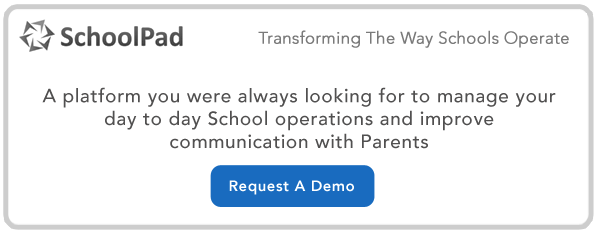Technology driven school management approaches are the latest trends across the country’s urban educational landscape. There are a plethora of softwares available for the schools that offer a promise to ensure that the tedious, time and resource consuming tasks are executed efficiently and judiciously. They offer the kind of assistance that is like a gift for the overworked, overwrought school staff.
But is it?
To be fair, technology is undoubtedly a boon for the school systems. With modern softwares, day to day tasks can be executed within half the time and resources and with double the accuracy, reducing the pressure on the school management and staff drastically. However, the introduction of these softwares into the school system is accompanied by an important caveat. It is a caveat that is ignored, sometimes due to lack of information and often because nobody is paying enough attention, overwhelmed by the promises that come with technology. Softwares are tools. Their efficiency and effectiveness depends on how well they are used. Software that is installed or used wrong can prove disastrous, making efficiency suffer and yielding results that are contrary to why it was installed in the first place. And it is surprisingly easy to go wrong with technology.
Watch This: 5 Key Considerations Before Opting For a School Management Software for Your School
The basic idea behind using technology is to reduce the overheads, save time and resources and enhance efficiency. Unfortunately, sometimes, the softwares might end up doing the exact opposite. With increase in the number of edtech tools, we’ve seen vendors breaking their products and multiplying the number of offerings — each with different price tags. Objectively, this hasn’t necessarily improved the overall efficiency but has definitely added to the burden on school management. This multiplicity of products inevitably becomes an unwarranted overhead for the school, not just in terms of cost but also in terms of the time teachers end up spending on using them. Also, because these softwares are time consuming and tedious, teachers sometimes may even lose interest and stop using them altogether.
Integration is fundamental and while it is in the interest of the vendors to sell multiple tools for various purposes, it is vital for the schools to ensure that this multiplicity does not become a hindrance for the overall efficiency of the system. Against this background, we at SchoolPad have always believed in and have continually advocated an integrated approach, focused on giving teachers and staff members a single platform where they can manage their daily tasks efficiently. This is fundamental to enable them to focus on the academics rather than wasting time on avoidable administrative logjams and resulting surplus tasks. We have also come across schools using softwares which had incorrect formulas or outdated logics built into them leading to generation of incorrect outcomes. What was even more troubling was that more often than not, these inconsistencies went unnoticed. And the primary reason behind this unfortunate carelessness was an absolute dependence on the software and hence lack of attention to details that would have otherwise been spotted.
The above illustration is just one of the many examples of how and what can go wrong with technology. As is evident from this illustration, the awareness of the pitfalls of technology is critical because once it is introduced into a system, staff forms habits that depend on that technology. Most softwares and technological tools take a long time before their chinks become noticeable. By that time, the habits have already been formed. And then, if the technology goes wrong, everyone is caught unaware and the whole system suffers a setback because the habits are already well entrenched. These habits not only prevent the staff from noticing if something is wrong with the software but also are very hard to change if the technology is required to be replaced. In the interest of efficiency, the school authorities ought to be vigilant about the softwares and tools that they choose to introduce into the system.
So, what has your experience been? Have you faced similar issues? Any suggestions to avoid these pitfalls? Share with us in the comments section.


